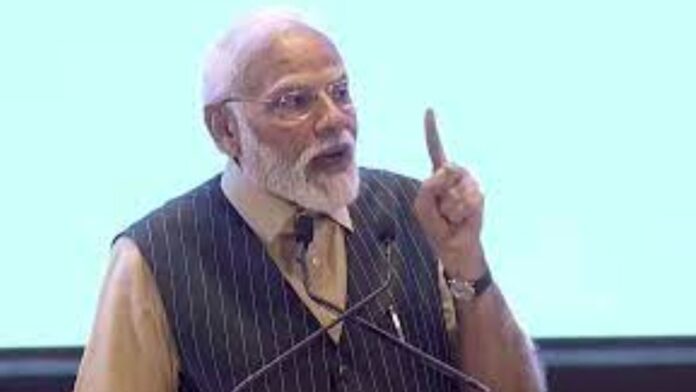Due to a steep decline in manufacturing and mining, the economy grew at sub-5% for two years, the worst in 25 years. After BJP won 282 seats and a majority mandate in May 2014, Prime Minister Narendra Modi seized command of the Indian economy.
Modi’s transformation of an Indian economy that was declining into a global bright spot with the fastest growth rate among large economies for two consecutive fiscals and on track for a third in FY24 is a remarkable achievement that deserves close examination. Indian economy steered clear of 2019 global downturn, covid lockdowns, commodities price spike owing to Ukraine war, and tightening global financial circumstances.
A review of GDP, notably GFCF, from 2011-12 shows that Modi’s real estate push boosted the Indian economy. A proxy for economic investment is GFCF. GFCF uses residential buildings and structures to represent real estate.
Since 2011-12, GFCF to GDP has declined, bottomed out in 2015-16, and is growing. The ratio of home dwellings, other buildings, and structures under GFCF to GDP at constant prices followed a similar path. The ratio rose from 7.67 percent in 2015-16 to 7.95 percent in 2021-22.
Global economic growth without real estate is unthinkable. Thus, real estate—including housing, retail, hotel, and commercial subsectors—is popular worldwide. Indian real estate is the second largest employer after agriculture and a major GDP contributor.
Its backward and forward links affect 300 economic sectors, giving real estate considerable leverage and cascading effects. Housing ranks fourth in economic multiplier effect and third among 14 major industries in overall linkage effect. According to Economic Survey 2011-12, housing and real estate investment is an indicator of economic growth.
Considering the economic multiplier effects of real estate, especially housing, and BJP’s 2014 manifesto promise to give every family a pucca house, Pradhan Mantri Awas Yojana – Urban was launched in June 2015 to build 2 crore houses for urban poor and – Gramin in November 2016 to build 2.95 crore houses for rural poor. Both designs supported Housing for All by 2022.
Pradhan Mantri Awas Yojana – Urban includes partnership-based affordable housing. Union Budget 2017-18 gave this component a boost by granting infrastructure status, increasing affordable housing promoters’ project completion time from 3 to 5 years, and refinancing individual loans by National Housing Bank.
The initiative and other efforts have completed over 3 crore dwellings. In the Union Budget 2023-24, the government boosted Pradhan Mantri Awas Yojana funding by 66% to 79 thousand crores, committing to the 5 crore housing goal. NITI Aayog’s National Multidimensional Poverty Index 2023 report credits Pradhan Mantri Awas Yojana with 135 million Indians leaving multidimensional poverty between 2015-16 and 2019-21. They entered middle class.
While Awas Yojana sought to improve the lives of the underprivileged, the Modi government was also aware of the expanding middle class’s desire to own a home and engage in real estate. RERA 2016, the Real Estate (Regulation and Development) Act, 2016, protects homebuyers by ensuring efficiency, quality, loan arrangements, and home delivery. Policies like 0% GST on completed housing units, inflation management, boosting tax exemption limit, and 1.5 lakh deduction on affordable housing loan interest have further increased housing unit demand.
GST simplified compliance and eliminated profiteering in supply. RERA 2016 boosted real estate through institutionalization and simplifying. Companies received bank loans and private equity. Reduced corporate tax rate and extended tax vacation for affordable housing projects in 2021 boosted housing supply. Recent increases in housing savings in tangible assets demonstrate the government’s sequenced housing initiatives.
Strong economy, growing industry and service sectors, smart cities mission, and e-commerce growth have increased commercial real estate demand. This sub sector benefited from government ease of doing business, foreign direct investment policy in township development and residential/commercial construction, RERA Act, and real estate investment trust promotion. Foreign office investments more than tripled to 10.3 billion USD in 2017-21 from 3.2 billion USD in the five years prior.
Real estate would grow dramatically from 200 billion USD in 2021 to 1 trillion USD by 2030. Real estate would be the vehicle for the Indian economy to reach 5 trillion USD and beyond quickly.




